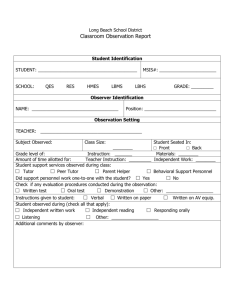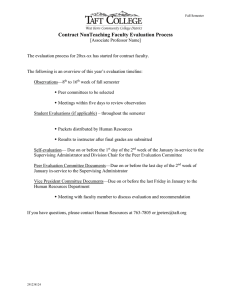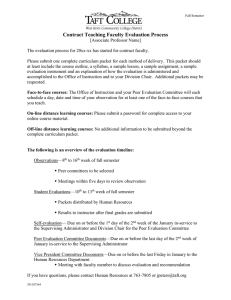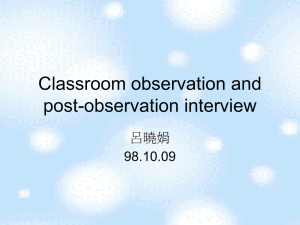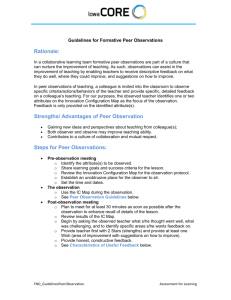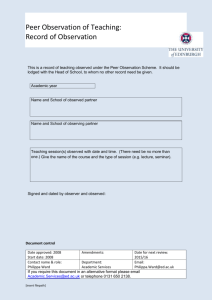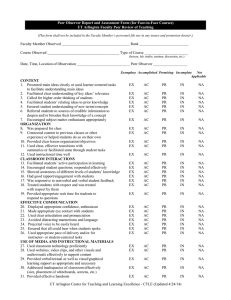Ideas for Sharing Teaching with Peers
advertisement
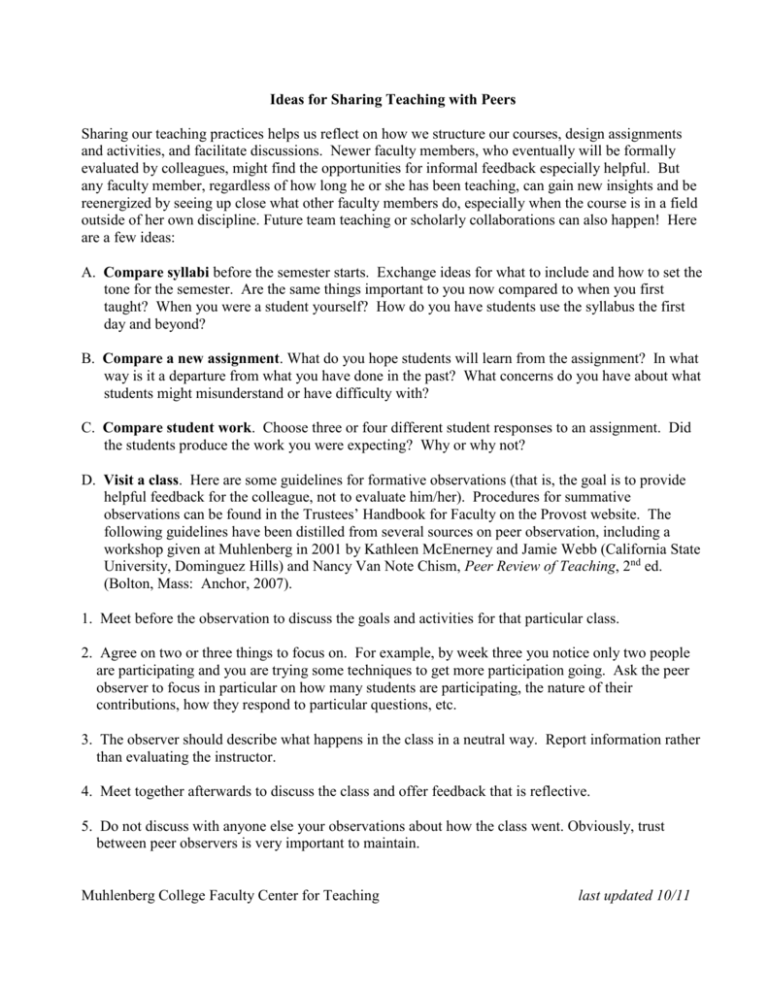
Ideas for Sharing Teaching with Peers Sharing our teaching practices helps us reflect on how we structure our courses, design assignments and activities, and facilitate discussions. Newer faculty members, who eventually will be formally evaluated by colleagues, might find the opportunities for informal feedback especially helpful. But any faculty member, regardless of how long he or she has been teaching, can gain new insights and be reenergized by seeing up close what other faculty members do, especially when the course is in a field outside of her own discipline. Future team teaching or scholarly collaborations can also happen! Here are a few ideas: A. Compare syllabi before the semester starts. Exchange ideas for what to include and how to set the tone for the semester. Are the same things important to you now compared to when you first taught? When you were a student yourself? How do you have students use the syllabus the first day and beyond? B. Compare a new assignment. What do you hope students will learn from the assignment? In what way is it a departure from what you have done in the past? What concerns do you have about what students might misunderstand or have difficulty with? C. Compare student work. Choose three or four different student responses to an assignment. Did the students produce the work you were expecting? Why or why not? D. Visit a class. Here are some guidelines for formative observations (that is, the goal is to provide helpful feedback for the colleague, not to evaluate him/her). Procedures for summative observations can be found in the Trustees’ Handbook for Faculty on the Provost website. The following guidelines have been distilled from several sources on peer observation, including a workshop given at Muhlenberg in 2001 by Kathleen McEnerney and Jamie Webb (California State University, Dominguez Hills) and Nancy Van Note Chism, Peer Review of Teaching, 2nd ed. (Bolton, Mass: Anchor, 2007). 1. Meet before the observation to discuss the goals and activities for that particular class. 2. Agree on two or three things to focus on. For example, by week three you notice only two people are participating and you are trying some techniques to get more participation going. Ask the peer observer to focus in particular on how many students are participating, the nature of their contributions, how they respond to particular questions, etc. 3. The observer should describe what happens in the class in a neutral way. Report information rather than evaluating the instructor. 4. Meet together afterwards to discuss the class and offer feedback that is reflective. 5. Do not discuss with anyone else your observations about how the class went. Obviously, trust between peer observers is very important to maintain. Muhlenberg College Faculty Center for Teaching last updated 10/11
